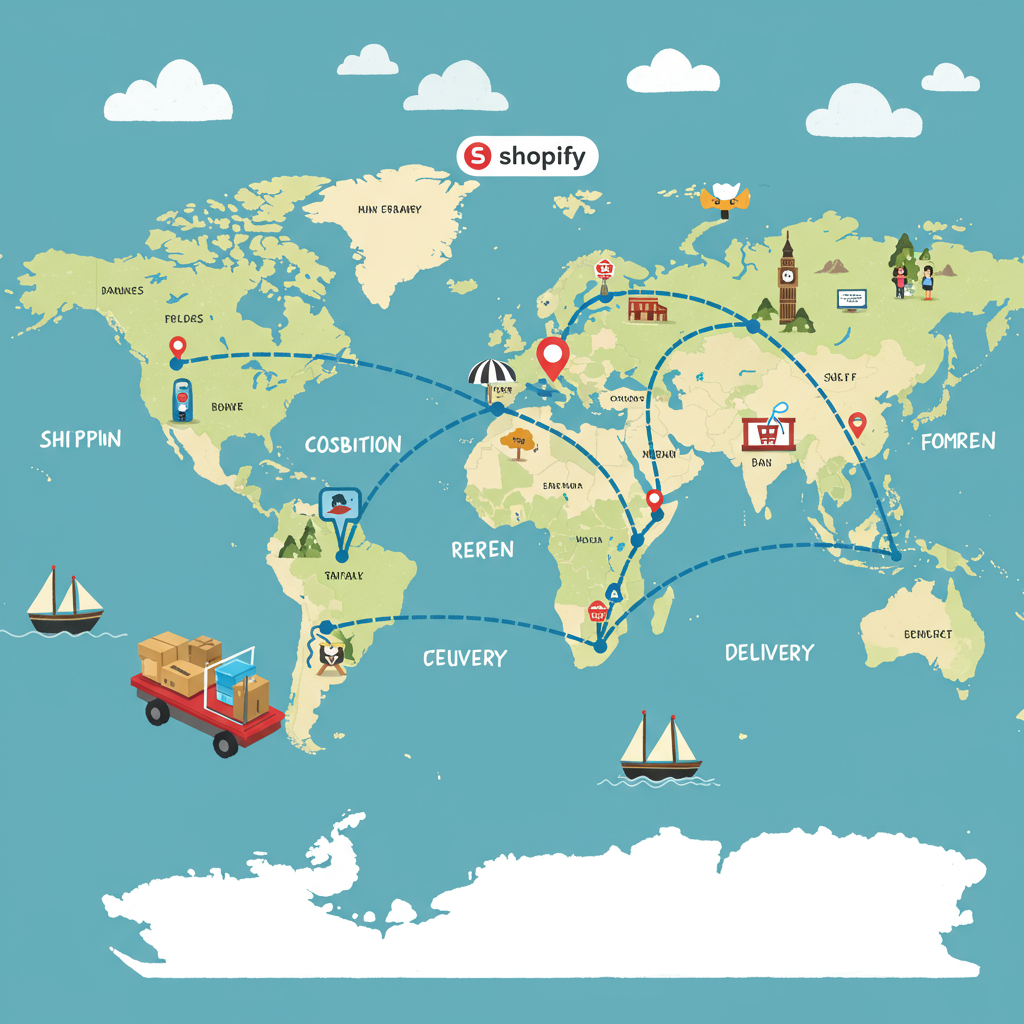Unlocking Global Markets: A Comprehensive Strategy for Shopify Merchants
As a Shopify merchant, I know the excitement of a new order. But what about an order from halfway across the world? International shipping can seem daunting, yet it holds immense potential for expanding your business.
I’ve spent a lot of time navigating these waters, and I want to share my insights to help you confidently reach customers in every corner of the globe.
My goal with this article is to break down the complexities of international shipping on Shopify into actionable steps. We’ll cover everything from choosing carriers to handling customs.
First, let’s acknowledge the opportunity. The global e-commerce market is booming, and limiting yourself to domestic sales means leaving a significant portion of revenue on the table.
However, it’s not as simple as just slapping a label on a box. There are regulations, duties, taxes, and customer expectations to consider.
My first piece of advice is always to do your homework. Research the specific countries you plan to ship to. What are their import regulations? Are there any prohibited items?
Understanding local laws and customs requirements is paramount. Ignorance here can lead to costly delays, fines, or even returned packages, which nobody wants.
Next, let’s talk about shipping carriers. You have several excellent options, each with its own strengths. I typically consider major players like DHL, FedEx, UPS, and even national postal services like USPS.
DHL is often my go-to for speed and reliability in international express shipping. FedEx and UPS also offer robust global networks and excellent tracking capabilities.
For more economical, albeit slower, options, I sometimes look at national postal services, especially for lighter, less time-sensitive items. They often partner with local carriers in destination countries.
When choosing, I weigh cost, transit time, tracking visibility, and insurance options. It’s not a one-size-fits-all decision; sometimes, I use different carriers for different regions or product types.
Now, let’s tackle shipping rates. How do you charge your customers? I find a combination of strategies works best. Shopify allows you to set up various shipping zones and rates.
Calculated rates, often pulled directly from your chosen carrier, offer the most accuracy. This means your customer pays exactly what it costs to ship their order.
Flat rates can be simpler, but you risk overcharging or undercharging. I might use flat rates for specific product categories or for very predictable shipping lanes.
Offering free international shipping, perhaps above a certain order value, can be a powerful conversion tool. Just remember to factor that cost into your product pricing.
My preferred method is often a tiered approach: free shipping over a high threshold, calculated rates for standard orders, and perhaps an expedited flat rate option.
One of the biggest hurdles is customs, duties, and taxes. This is where many merchants get tripped up. You need to decide whether you’ll ship DDU (Delivery Duty Unpaid) or DDP (Delivery Duty Paid).
With DDU, the customer is responsible for paying duties and taxes upon arrival. This can lead to unexpected fees for them and a poor customer experience if not clearly communicated.
I generally prefer DDP whenever possible. This means you, the merchant, collect the duties and taxes at checkout and remit them. It provides a smoother, more transparent experience for your international customers.
Shopify apps can help with DDP by calculating these fees at checkout. This is a game-changer for managing international orders seamlessly.
Remember to include Harmonized System (HS) codes on your customs declarations. These codes classify your products and help customs officials determine the correct duties and taxes.
Accurate documentation is crucial. Always include a commercial invoice with your shipment, detailing the contents, value, and sender/recipient information.
Proper packaging is also vital. International shipments endure a lot of handling. I always ensure my products are securely packed to withstand the journey.
Providing tracking information is non-negotiable. Your international customers will want to follow their package’s journey. Proactive communication about shipping status builds trust.
What do you think about these strategies so far? I’m always keen to hear other merchants’ experiences and insights.
Finally, consider your international returns policy. It needs to be clear and manageable. How will you handle returns from abroad? Will the customer pay for return shipping?
While international returns can be complex, having a transparent policy in place is essential for customer satisfaction and building long-term relationships.
Shopify’s built-in features, like shipping zones and currency converters, are incredibly helpful. I also leverage various apps from the Shopify App Store to streamline my international operations.
These apps can assist with everything from duty calculation to localized pricing and even managing international fulfillment partners.
Expanding your Shopify store globally is a significant step, but with a well-thought-out shipping strategy, it’s entirely achievable. It opens up new markets and incredible growth opportunities.
I encourage you to take the leap. Start small, perhaps with a few key countries, and then expand as you gain confidence and experience. The world is waiting for your products!






